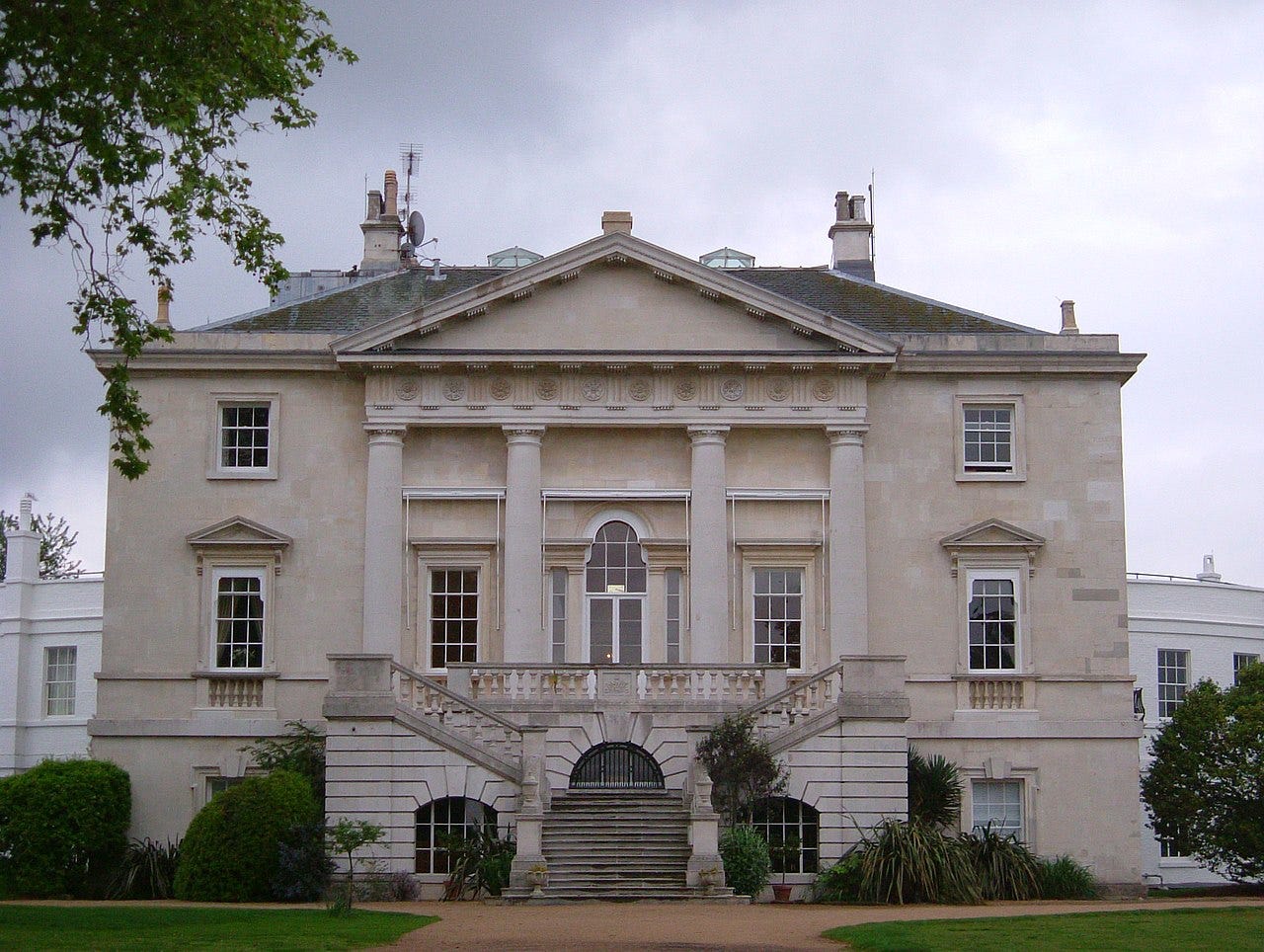The Victorian Tiara That Disappeared at a British Royal Garden Party
More than a century ago, as a princess received sparkling wedding presents at a garden party, one of her brand-new tiaras suddenly went missing.
Today marks the 131st anniversary of one of the most important British royal marriages: the wedding of King George V and Queen Mary, who would go on to shepherd the royal family through a reign full of remarkable change. Ahead of the royal wedding, the bride received numerous sparkling presents at a garden party at the home of her parents, the Duke and Duchess of Teck. Today, we’ve got the story of the jewels that arrived in Mary’s collection that day–and the tiara that nearly vanished during the celebrations.
A grandfather clock, tucked away in a small room at the end of a semi-circular corridor inside White Lodge in Richmond Park, had just chimed half-past-three when a group of tradesmen from nearby Mortlake arrived at the main entrance of the stately home on the afternoon of June 26, 1893. Many of them had been employed to do work at the house over the years by the current tenants, the Duke and Duchess of Teck, but on this occasion they had arrived at the house as guests rather than workers. They were ushered into the corridor, where they marveled at the grand objects arranged among the palms and pictures in the bright space. Tea services, inkwells, parasols, fire screens, sketches, opera glasses, decorative boxes, and, of course, jewels: all of these and more, wedding presents for the Duke and Duchess’s only daughter, were carefully and thoughtfully displayed.
As the tradesmen let their eyes wander over the gleaming objects, Princess Victoria Mary of Teck, better known to those who loved her as “May,” quietly stepped into the gallery. May would one day become Queen, but in June 1893, she was still a minor member of the royal families of Britain and Württemberg. May’s mother, Princess Mary Adelaide, Duchess of Teck, was a first cousin of Queen Victoria. Her father, Prince Francis, Duke of Teck, was a nephew of King Wilhelm I and Queen Pauline of Württemberg. Though Mary Adelaide was nowhere near the top of the line of succession when she was married in 1866, Queen Victoria granted the Tecks the use of a grace-and-favour apartment in Kensington Palace (until their extravagant spending forced them to abandon it) and a country home, White Lodge.
Despite the relatively minor royal status of May’s parents, and their persistent inability to live within their means, Queen Victoria had swiftly identified May as a perfect candidate to marry one of her royal grandsons. Initially, May was persuaded to marry the Duke of Clarence, the profligate heir of the Prince of Wales, but his shocking and unexpected death during an influenza pandemic had ended their union before it ever began. After a year of mourning, May agreed to accept a proposal from the late Duke’s younger brother, the Duke of York. George was much steadier (and healthier) than his elder brother had been. The engagement was officially announced in May 1893.
There had been an outpouring of public sympathy for Princess May after the death of the Duke of Clarence in 1892, and that public kindness extended to enthusiastic celebrations of her subsequent engagement and marriage. Numerous British subjects wanted to share in George and May’s joy, and they subscribed in droves to public wedding gift collection projects. The people who lived near May’s home in Richmond were particularly keen to lavish gifts on their princess. Among them were those tradesmen from Mortlake who had gathered in the corridor at White Lodge in June 1893. They had given May the “very fine” grandfather clock which was melodically reminding the Lodge residents of the time every half hour.
Keep reading with a 7-day free trial
Subscribe to Hidden Gems to keep reading this post and get 7 days of free access to the full post archives.





